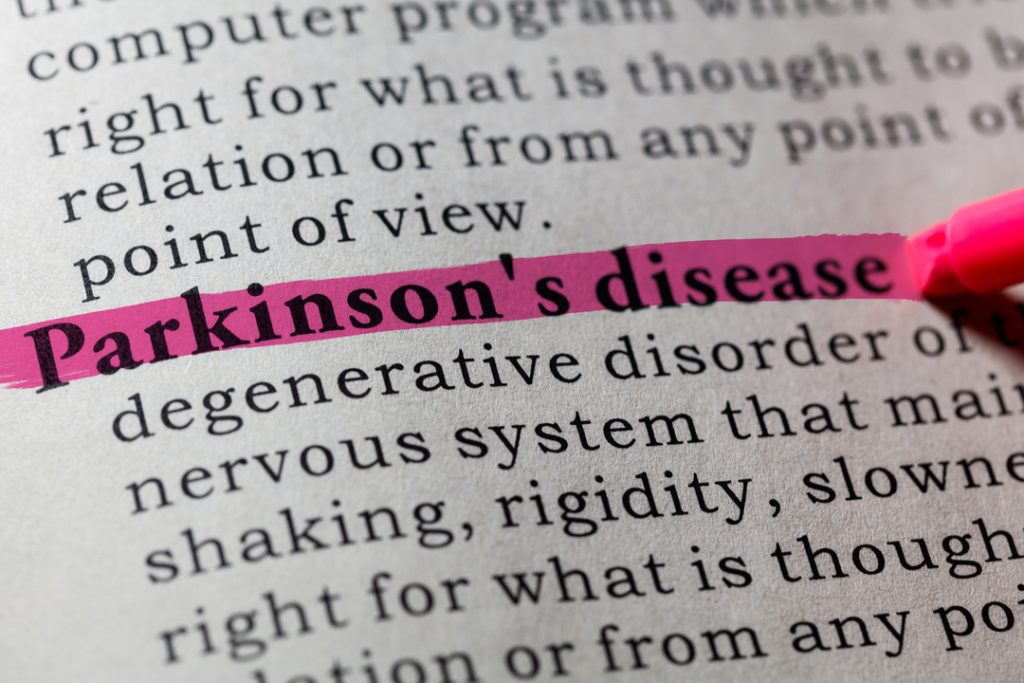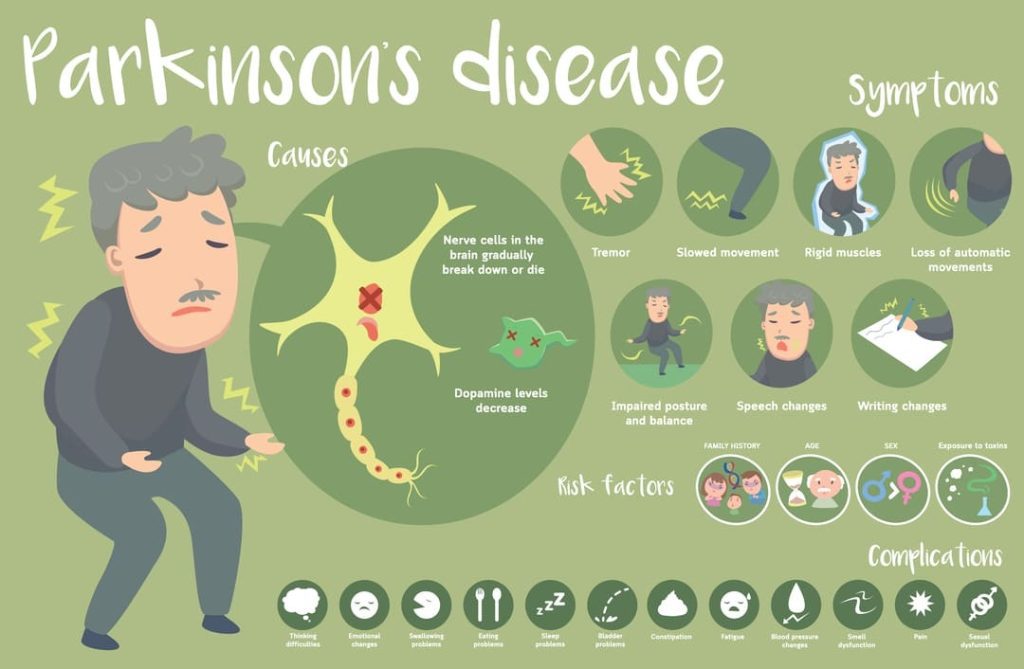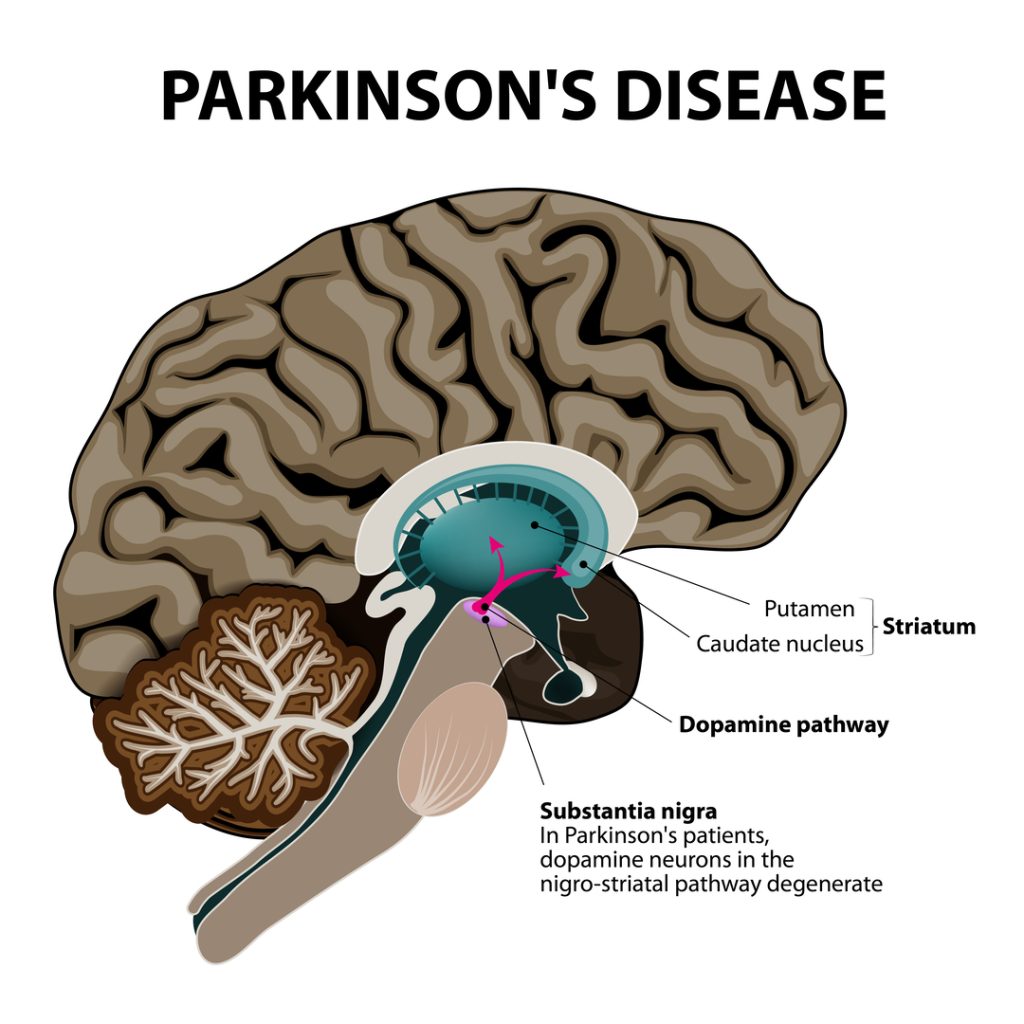Looking for Expert-Level VA Claim Answers?📱Call Us Now! 737-295-2226
Parkinson’s disease can be debilitating, and many veterans are unsure how to get the help they need from the VA. This guide will show you everything you need to know about getting a VA disability rating for Parkinson’s disease. We’ll explain what evidence you need to provide and how to present your case to the VA.
You may feel alone in this fight, but you’re not. Thousands of veterans have won disability ratings for their Parkinson’s disease, and with the correct approach, you can, too.
- How is Parkinson’s Disease Related to Military Service?
- VA Parkinson Disease Rating Scale (38 CFR Parkinson’s Disease)
- VA Disability Compensation Benefits for Parkinson’s Disease
- How To Win a Parkinson’s Disease VA Rating
- Is Parkinson’s Included as a Presumptive Disease?
- Getting Help With Your Parkinson’s VA Disability Claim
- Frequently Asked Questions
- Is Parkinson’s service connected?
- Is VA Special Monthly Compensation Permanent?
- What Is the Average VA Disability Rating for Parkinson’s Disease?
- What Is the VA Rating for Tremors?
- Is Parkinsons’ a Long-Term Disability?
- Is It Hard To Get Disability for Parkinson’s?
- What is VA 38 CFR?
- How Much Does VA pay for Parkinson’s?
- NEED MORE ASSISTANCE?
- About the Author

Become an Insider
We’re Veterans helping Veterans Worldwide™, and since 2016 we’ve helped 10,000+ Veterans just like you INCREASE their VA disability rating!
How is Parkinson’s Disease Related to Military Service?
Parkinson’s disease is a neurological condition that affects movement. The disorder develops when nerve cells in the brain die or become impaired. Parkinson’s disease can cause tremors, stiffness, and difficulty with balance and coordination. The exact cause of Parkinson’s disease is unknown, but it is believed to be caused by a combination of genetic and environmental factors.
It is believed that exposure to certain toxins, including pesticides and herbicides, may increase the risk of developing Parkinson’s disease. Military service is also a risk factor for the condition. Veterans are more likely to develop Parkinson’s disease than the general population. It could be due to exposure to toxins or head injuries sustained during military service.
There is no cure for Parkinson’s disease, but treatment can help manage symptoms and improve quality of life. Treatment for Parkinson’s disease typically includes medication and physical therapy. In some cases, surgery may be recommended to improve symptoms.
What Does the VA Consider Parkinson Like Symptoms?
The VA considers Parkinson-like symptoms to be neurological disorders that affect movement. Symptoms can include tremors, stiffness, and difficulty with balance and walking.
To be eligible for benefits, veterans must have a diagnosis of Parkinson’s disease from a certified neurologist. However, the VA will also consider claims from veterans who have symptoms similar to Parkinson’s but do not have a formal diagnosis.
To receive benefits, veterans must provide medical evidence that their symptoms affect their ability to work or perform daily activities. The VA may also require veterans to undergo a physical examination to determine whether their symptoms are service-connected.

VA Parkinson Disease Rating Scale (38 CFR Parkinson’s Disease)
The VA uses the Parkinson’s Disease rating system under the 38 CFR to evaluate the severity of a Veteran’s Parkinson’s symptoms and assign a corresponding disability rating.
The minimum rating that can be assigned under diagnostic code 8004 is 30 percent, but this does not consider the presence of associated symptoms. To accurately rate this condition, the VA will consider the manifestations due to Parkinson’s disease such as stooped posture, balance impairment, bradykinesia or slowed movement, loss of automatic movements, speech changes, tremors, and muscle rigidity and stiffness.
Based on the evidence submitted, the VA will assign a disability rating that reflects the overall impact of the veteran’s symptoms on their ability to function.
Other symptoms that are manifested would be rated under different codes depending on which best describes the exact problem. The ratings for these symptoms will be calculated. Whichever has the higher rating (the minimum 30 percent rating, or the combined rating of the symptoms) will be assigned.
The VA will also consider other conditions the veteran has that may impact their ability to function, such as depression or anxiety.

VA Disability Compensation Benefits for Parkinson’s Disease
If you are a veteran diagnosed with Parkinson’s, you may be eligible for several VA benefits, including disability compensation, health care, and vocational rehabilitation and employment.
“In 2020, VA and the Parkinson Foundation formed a partnership to improve the health and well-being of Veterans living with PD. The collaboration is designed to ensure Veterans living with PD have access to the information and resources they need to better manage their health.
The partnership has three primary goals: to increase access to PD information, resources, and providers; educate Veterans and providers on PD management and best practices; and help Veterans navigate Parkinson’s-related health and social services.” (source: research.va.gov)
To receive benefits, you will need to file a VA claim and get service-connect for this condition.
VA Special Monthly Compensation for Parkinson’s
If you have Parkinson’s and are receiving VA disability benefits, you may be eligible for Special Monthly Compensation (SMC). SMC is a higher rate of compensation paid to veterans with certain service-connected disabilities.
If you qualify for SMC, your benefits will be increased based on the severity of your disability. For example, if you have difficulty using your limbs, require help with activities of daily living, or are unable to work, you may be eligible for a higher compensation rate.
Service Connection for Parkinson’s Disease
If you’re a veteran experiencing Parkinsonism symptoms, you may wonder if you can receive a service connection for Parkinson’s disease. The answer is that you may be eligible for service connection even if you have not yet been diagnosed with the condition.
According to the VA, veterans should not have to wait for their condition to worsen before filing for benefits. Therefore, if you have documented symptoms of Parkinson’s, you may be eligible for a service connection.
To support your claim, you will need to provide evidence of your symptoms and how they are impacting your life. For example:
- medical records documenting your symptoms,
- statements from friends or family members attesting to the changes they’ve observed in you,
- or a personal statement detailing how your symptoms have affected your life.
Gather as much evidence as possible to support your claim if you’re seeking a service connection for Parkinson’s disease.

How To Win a Parkinson’s Disease VA Rating
If you are a veteran with Parkinson’s, you may be wondering how to win a Parkinson’s disease VA rating.
Even if you have a Parkinson’s diagnosis from a civilian doctor, the VA will still require you to provide additional evidence to justify a Parkinson’s disease VA disability rating.
- The first step is to obtain a formal diagnosis from a qualified medical professional. It can be difficult, as Parkinson’s can often be misdiagnosed. Be sure to get all the required tests and consult with a specialist if necessary.
- Once you have your diagnosis, you must gather evidence to support your claim. It can include a nexus letter from a licensed medical provider, medical records, prescriptions, doctor’s notes, and anything else that documents your condition and its effects on your daily life.
- After collecting all the necessary evidence, file a claim with the VA.
- Once your claim is filed, the VA will review your evidence and determine your eligibility for benefits. If you’re approved, you will be assigned a disability rating based on the severity of your condition.
If you’re not approved or feel like your disability rating is too low, you have the right to appeal the decision. The appeals process can be complex, so seeking expert help is advisable.
Winning a Parkinson’s disease VA rating can be challenging, but it’s possible with the right evidence and support.
Is Parkinson’s Included as a Presumptive Disease?
Exposure to certain toxins, such as Agent Orange, has been linked to an increased risk of Parkinson’s. The VA has acknowledged this link and now includes Parkinson’s as a presumptive condition for veterans exposed to Agent Orange. It means that veterans do not need to prove that their Parkinson’s is related to their exposure to receive benefits.
Parkinson’s is included as a presumption to contaminated Camp Lejeune water exposure.
Parkinson’s can be a debilitating disease, so this recognition by teh Veterans Affairs is important for ensuring that veterans receive the care and support they need.

Getting Help With Your Parkinson’s VA Disability Claim
We hope this guide has been helpful. We’re VA insiders here to walk you through everything you need to know. Remember, if you have any questions, we encourage you to contact us for support.
Frequently Asked Questions
Is Parkinson’s service connected?
When filing for disability benefits with the Department of Veterans Affairs (VA), veterans must prove service connection, meaning that their disability is service-connected to receive compensation.
For many veterans, this can be a difficult task. However, if your Parkinson’s disease is due to exposure and considered presumptive, you do not need to prove service connection–it is presumed.
Is VA Special Monthly Compensation Permanent?
If you receive VA disability compensation, you may wonder if the benefits are permanent. The answer depends on the severity of your condition and whether it is expected to improve.
In general, the more severe your condition, the longer you can expect to receive benefits. For example, if you have a temporary injury that is expected to heal, your benefits will stop once you have recovered. However, if you have a chronic condition like Parkinson’s disease, your benefits will continue as long as you remain disabled.
What Is the Average VA Disability Rating for Parkinson’s Disease?
Parkinson’s disease is a degenerative nervous system disorder that can cause tremors, muscle stiffness, and slow movement. The VA assigns an automatic minimum 30 percent rating for Parkinson’s disease.
The severity of symptoms varies from person to person, so the actual Parkinson’s VA disability rating assigned by the VA will depend on how Parkinson’s disease affects the individual veteran. Other symptoms that are exhibited would be rated under different codes depending on which best describes the exact problem. The ratings for these symptoms will be calculated. Whichever has the higher rating (the minimum 30 percent rating or the combined rating of the symptoms) will be assigned.
What Is the VA Rating for Tremors?
If you have essential tremors, you might be wondering what your VA rating will be. There are no specific VA disability rating criteria for essential tremors. However, VA will most likely rate your claim based on the median nerve paralysis diagnostic code 8515. They may give you a percentage assessment depending on the severity of your symptoms utilizing this code.
The higher the percentage rating, the more severe your tremors are and the more assistance you’ll need to perform daily tasks. You may receive a 10% rating if your tremors are mild incomplete. For moderate incomplete tremors, you may receive a 20-30% rating. And for severe incomplete tremors, you may receive a 40-50% rating.
Of course, every case is unique, you will be rated based on the specific symptomology and your specific situation.
Is Parkinsons’ a Long-Term Disability?
There’s no denying that Parkinsons’ is a long-term disability. The symptoms can last for years, and there’s currently no cure. However, that doesn’t mean people with Parkinson’s can’t lead full and fulfilling lives.
With the right support and treatment, many people with Parkinson’s can manage their symptoms and enjoy a good quality of life. People with Parkinson’s can live full and rewarding lives with the right support and treatment.
Is It Hard To Get Disability for Parkinson’s?
If you have Parkinson’s disease, you may wonder if you qualify for disability benefits. The process can seem confusing, but the reality is that it is possible to get a disability for Parkinson’s.
The first step is to gather medical evidence documenting your condition. It can include your diagnosis, medical nexus letter, records from your doctor, therapy notes, and test results. Once you have this documentation, you must file a claim to the VA. The review process can take several months, but you will begin receiving monthly payments if your application is approved. If you are considering applying for disability benefits, it is important to understand that the process can be lengthy, but it is possible to get approved.
What is VA 38 CFR?
You may have heard of VA 38 CFR if you’re a veteran. But what is it? VA 38 CFR is the Veterans Affairs Code of Federal Regulations. It contains laws and regulations governing the VA, including how veterans provide benefits. The regulations in VA 38 CFR are designed to ensure that veterans receive the care and benefits they need and deserve.
They cover a wide range of topics, from eligibility for benefits to the types of care and services the VA provides. If you have any questions about your benefits or the care you’re receiving from the VA, you can always refer to VA 38 CFR.
How Much Does VA pay for Parkinson’s?
The VA provides disability compensation for veterans with Parkinson’s disease. The amount of compensation depends on the severity of the disability. It can be as much as $3,332.06 per month for a veteran with severe Parkinson’s (based on veteran alone rate).
In addition to disability compensation, the VA also provides health care and other benefits to veterans with Parkinson’s disease.
NEED MORE ASSISTANCE?
Most veterans are underrated for their disabilities and therefore not getting the compensation they’re due. At VA Claims Insider, we help you understand and take control of the claims process, so you can get the rating and compensation you’re owed by law.
Our process takes the guesswork out of filing a VA disability claim and supports you every step of the way in building a fully-developed claim (FDC)—so you can increase your rating fast!
If you’ve filed your VA disability claim and have been denied or have received a low rating—or you’re unsure how to get started—reach out to us! Take advantage of a FREE VA Claim Discovery Call. Learn what you’ve been missing—so you can FINALLY get the disability rating and compensation you deserve!
About the Author

Trisha Penrod
Trisha Penrod is a former active-duty Air Force officer. As an Intelligence Officer, she led teams of analysts to apply advanced analytic skills to identify, assess, and report potential threats to U.S. forces.
Trisha attended the U.S. Air Force Academy and holds an MBA from Webster University. After receiving an honorable discharge in 2018, Trisha worked as a growth marketer and utilizes her analytic skills to help others accomplish their business goals.



